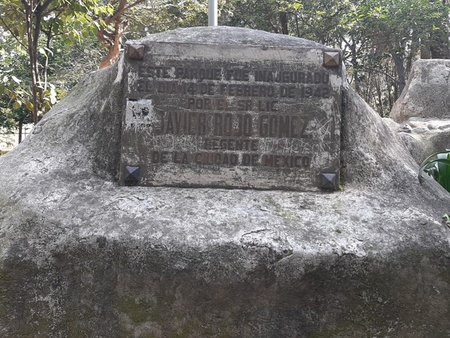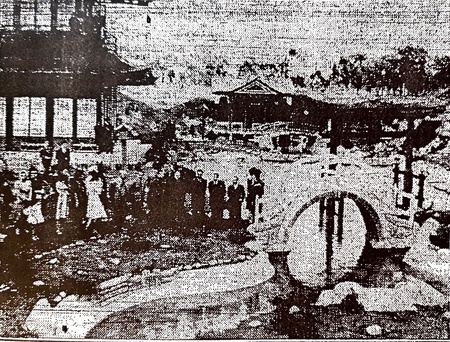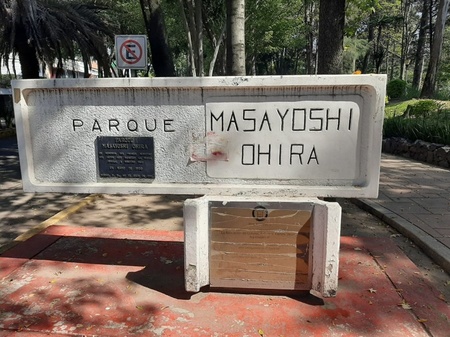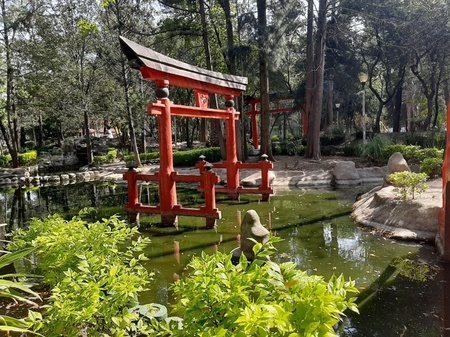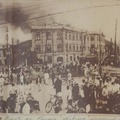The minister responsible for the Japanese Legation in Mexico, Miura Yoshiaki, surely read in the newspapers about the upcoming inauguration of the Japanese park in the “aristocratic” and new area of the Churubusco Country Club, while he was confined to his residence. The Japanese diplomat was awaiting, along with his collaborators, his transfer to the United States as part of the exchange program for prisoners of war and officials between the Allied and Axis powers.
The suspension of diplomatic relations between Mexico and Japan after the attack on Pearl Harbor on December 6, 1941, generated a radical change in the perception of that Asian country by Mexicans. Now propaganda and the press closely followed Japan's progress in the Pacific War, turning it into the new enemy. The above, added to the Mexican policies of surveillance and later mandatory concentration for Japanese residents and their families (many of them with a long residence in the country, others already naturalized Mexicans; even a large number had already been born in the national territory) caused mobility restrictions within Mexico City. While the numerous Japanese diplomatic personnel were under strict observation by the police and FBI agents, the persecutions extended to the Japanese community, which increasingly escalated, accusing them of espionage or fifth columnists.
While this was happening in the capital of the country and throughout the national territory, the inauguration of the new tourist attraction in Mexico City was scheduled for February 14, 1942. Various inserts appeared in the newspapers promoting this great event with the nuance that it was an “Oriental” park (Image 1). inspired by the “Chinese-Korean” civilization, omitting that it was actually based on traditional Japanese landscapes and architecture. The promoters of the real estate company headed by Gabriel Martínez Montero promoted the aforementioned entertainment place that included a garden, the children's city, a labyrinth and a model house that would be the example of the homes that they would build in the new urban area of the city of Mexico.
While Miura and his staff on February 11 and 12 celebrated the anniversary of the founding of the Japanese Empire, which dated back to 600 BC, El Excélsior covered a note that to the rhythm of “jazz music, rich liquors and exquisite foods” they angrily celebrated the diplomatic staff. 1 One thing was clear, none of them would be invited or even any Japanese living in Mexico City. The day arrived and the head of the central department of the Federal District, Javier Rojo Gómez, along with a dozen officials, inaugurated the “Japanese park” at one-thirty in the afternoon – as the press releases now referred to it – and in His speech praised the businessmen who in a short time had transformed those lands into a “pride” of the capital despite the conditions that the world faces due to the world war and who made “Mexico bigger, more beautiful and more attractive". 2
The property had a three-story pagoda, a small lake, bridges and other “oriental” facilities; in addition to the aforementioned model house and the children's city, as well as a labyrinth (Image 3) Some time later it was known as the “pagoda park”, the building was vandalized and burned in 1974.
Already in 1980, within the framework of the state visit of Prime Minister Ohira Masayoshi, to Mexico and to celebrate his presence in the city, its name was officially changed in honor of the distinguished Japanese politician, which was remodeled and reopened on July 30 1981 (Image 4). However, later it was subject to neglect by the Coyoacán delegation of the then Federal District.
In 2015, under the initiative of the Embassy of Japan and with funds donated by the Japanese Mexican Association (AMJ), with the participation of the settlers of Country Club Churubusco, it was restored (Image 5) and reopened with the presence of Ohira Tomonori , grandson of the former prime minister, of the then Japanese ambassador to Mexico, Yamada Akira and of Toda Makoto, current president of the AMJ. 3
Today the park is a somewhat hidden enclave in Mexico City. It has become a favorite place for photo sessions of quinceañeras or a space to rest and walk for the curious and including the new “fans” of Japanese popular culture who like to appreciate the Torii (鳥居), that is, the Japanese doors with reddish tones and black details that can be seen and abound in the different Shinto temples throughout Japan. Perhaps except for the residents of the area and those interested in the history of the Japanese community in Mexico City, the fact that it was inaugurated without the presence of any Japanese is practically unknown since everyone was confined and guarded at the beginning of the war. from Pacific.
Grades:
1. “The Japanese celebrate an Anniversary with good wines”, Excelsior , February 13, 1942, p.1
2. The Japanese Park is Inaugurated”, Excelsior , February 15, 1942, p.
3. Carlos Villasana and Ruth Gómez, “ Un Padecito de Japon en México ”, El Universal , June 17, 2016, (retrieved May 20, 2022)
© 2022 Carlos Uscanga



